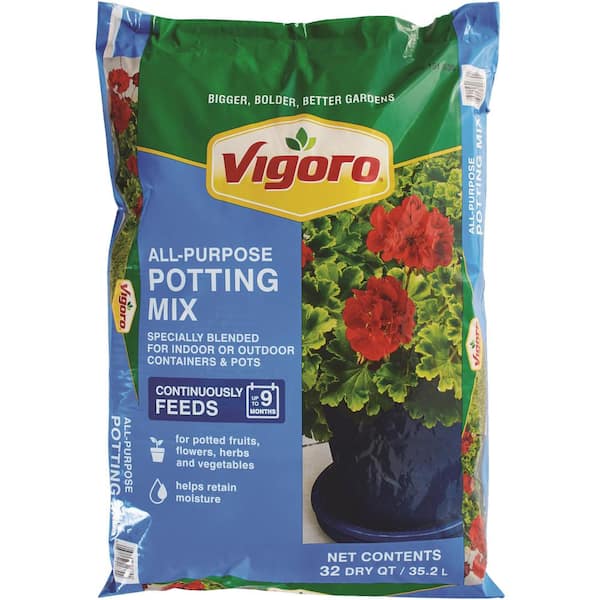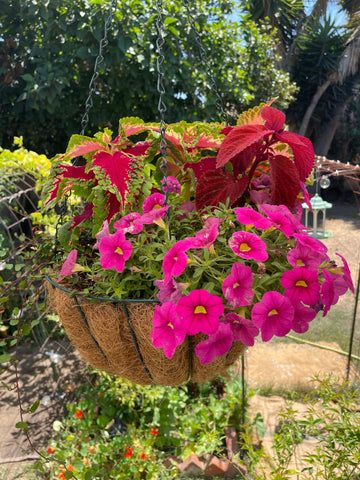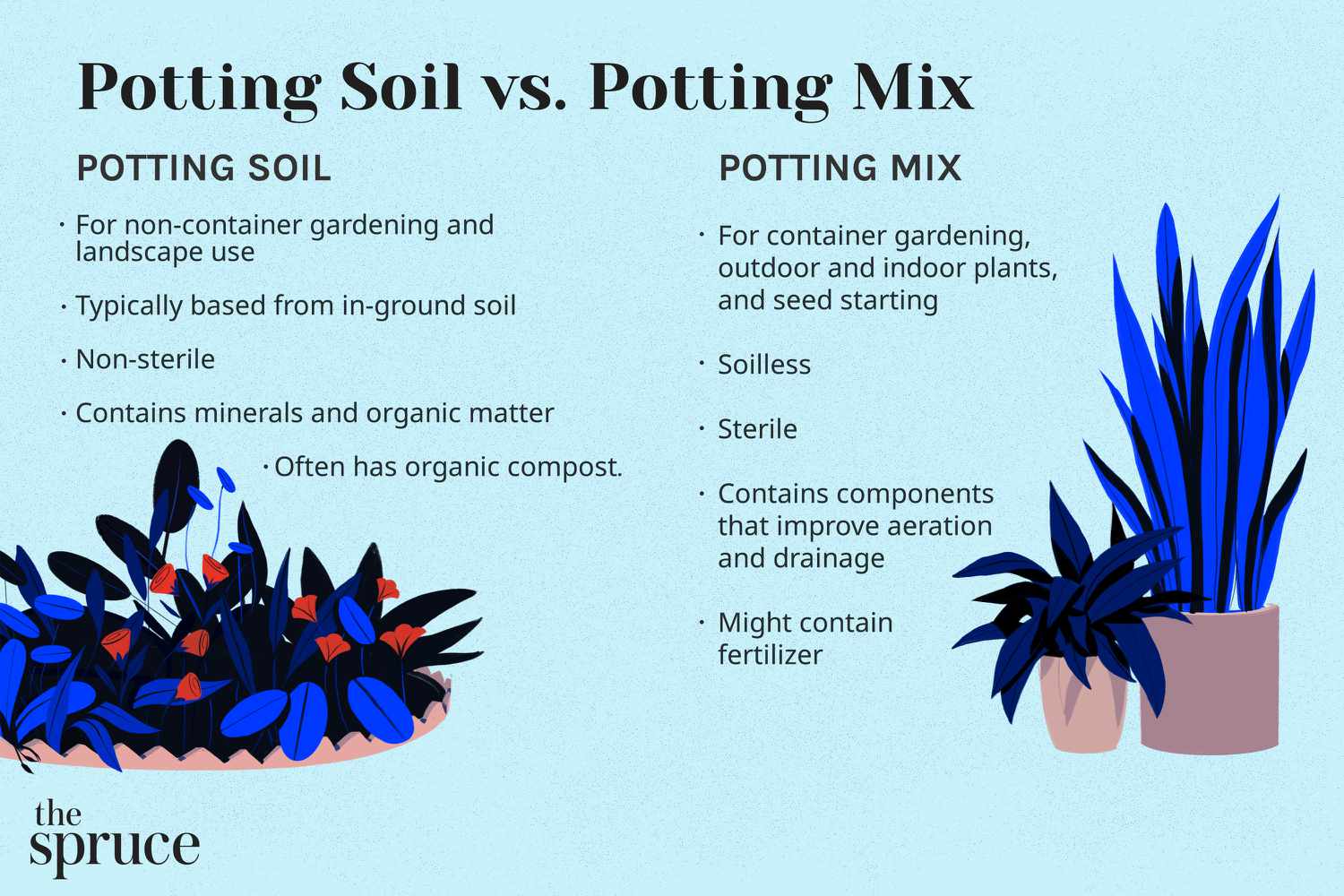As an Amazon Associate, I earn from qualifying purchases.
Outdoor potting soil can be used for indoor plants, but it’s not ideal. Indoor plants require specific soil conditions for optimal growth.
Indoor plants thrive best in soil designed for their unique needs. Outdoor potting soil often contains pests, pathogens, and weed seeds that can harm indoor plants. It might also have a different pH and drainage capacity, which can affect plant health.
Using soil tailored for indoor plants ensures they get the right nutrients, moisture retention, and aeration. This promotes healthier growth and reduces the risk of disease. Choosing the right soil is crucial for maintaining vibrant and thriving indoor plants. Always opt for high-quality indoor potting mix for the best results.
Choosing The Right Soil
Choosing the right soil is crucial for plant health. Indoor plants need specific soil to thrive. Outdoor soil might not meet these needs.
Differences Between Indoor And Outdoor Soil
Indoor and outdoor soils are different. Indoor soil is lighter and drains well. Outdoor soil is heavier and holds more water.
Indoor soil often contains peat moss, perlite, and vermiculite. These ingredients help with drainage and aeration. Outdoor soil may have more clay and organic matter.
Importance Of Proper Soil
Proper soil is key to healthy indoor plants. Good soil provides nutrients, supports roots, and manages moisture.
- Nutrients: Indoor soil contains essential nutrients for plant growth.
- Root Support: It helps roots stay strong and stable.
- Moisture Management: Proper soil ensures plants get the right amount of water.
| Feature | Indoor Soil | Outdoor Soil |
|---|---|---|
| Weight | Light | Heavy |
| Drainage | Good | Poor |
| Ingredients | Peat moss, perlite, vermiculite | Clay, organic matter |

Credit: www.homedepot.com
Components Of Outdoor Potting Soil
Understanding the components of outdoor potting soil is crucial when considering its use for indoor plants. Each ingredient plays a vital role in plant health. Below, we discuss common ingredients, benefits, and drawbacks of outdoor potting soil.
Common Ingredients
Outdoor potting soil contains a variety of ingredients. Some of the most common ones include:
- Peat Moss: Helps retain moisture and provides a light texture.
- Perlite: Improves soil aeration and drainage.
- Compost: Adds nutrients and improves soil structure.
- Sand: Increases drainage and prevents soil compaction.
- Bark: Enhances soil aeration and provides organic matter.
Benefits And Drawbacks
Using outdoor potting soil for indoor plants has its own set of benefits and drawbacks.
| Benefits | Drawbacks |
|---|---|
|
|
Choosing the right soil is essential for indoor plant health. Outdoor potting soil offers nutrients and is often cheaper. But it may contain pests and have poor drainage. Always consider these factors before using it indoors.
Potential Issues
Using outdoor potting soil for indoor plants may seem convenient. Yet, it can bring a host of problems. These issues can affect plant health and home cleanliness.
Pest Infestations
Outdoor potting soil often contains pests. These pests include insects and larvae. They can hide in the soil. Once indoors, they can spread quickly. Pests can harm indoor plants. They can also invade your home. Common pests include:
- Ants
- Aphids
- Fungus gnats
These pests can damage plant roots. They can also spread diseases. Keeping pests away from indoor plants is crucial.
Soil Compaction
Outdoor potting soil tends to compact over time. Compacted soil is dense. It restricts water and air flow. Indoor plants need loose soil for healthy growth. Compacted soil can lead to root rot. It also makes it hard for roots to spread.
Here’s a table showing soil types and their compaction levels:
| Soil Type | Compaction Level |
|---|---|
| Outdoor Potting Soil | High |
| Indoor Potting Mix | Low |
Using the right soil helps plants thrive. It ensures they get enough air and water. Avoiding soil compaction is key to healthy indoor plants.
Improving Outdoor Potting Soil
Using outdoor potting soil for indoor plants can be tricky. Outdoor soil may contain pests or lack nutrients. Here’s how to improve it for indoor use.
Sterilizing The Soil
Sterilizing the soil removes pests and pathogens. You can bake the soil to kill harmful organisms. Follow these simple steps:
- Preheat your oven to 180°F (82°C).
- Spread soil evenly on a baking sheet.
- Bake for 30 minutes.
- Let the soil cool before using.
Adding Amendments
Adding amendments enhances soil quality. These materials improve drainage, aeration, and nutrients. Here are some common amendments:
| Amendment | Benefits |
|---|---|
| Perlite | Improves aeration and drainage |
| Compost | Increases nutrients and organic matter |
| Vermiculite | Retains moisture and nutrients |
Mix these amendments with the sterilized soil. Use a ratio of one part amendment to three parts soil. This ensures the best conditions for indoor plants.
Alternatives To Outdoor Soil
If you love indoor plants, you might wonder about using outdoor soil. But there are better options. Let’s explore some alternatives to outdoor soil.
Commercial Indoor Potting Mix
Commercial indoor potting mix is perfect for houseplants. It is specially made for indoor use. It is lightweight and drains well. This mix often contains peat moss, perlite, and vermiculite. These materials help retain moisture and provide nutrients. Using a commercial mix can reduce the risk of pests and diseases.
| Material | Benefit |
|---|---|
| Peat Moss | Holds moisture |
| Perlite | Improves drainage |
| Vermiculite | Retains nutrients |
Diy Soil Mixes
Making your own soil mix is easy and fun. You can control the ingredients and their quality. Here are some simple recipes for DIY soil mixes:
- Mix 1: 1 part peat moss, 1 part perlite
- Mix 2: 2 parts compost, 1 part sand, 1 part coconut coir
- Mix 3: 1 part garden soil, 1 part compost, 1 part perlite
These DIY mixes are great for different types of indoor plants. They provide good drainage and enough nutrients. You can also add some fertilizers for extra growth. Remember to sterilize garden soil to kill any pests or diseases.

Credit: rosysoil.com
Expert Tips For Success
Using outdoor potting soil for indoor plants can be tricky. Follow these expert tips to ensure your indoor garden thrives.
Monitoring Plant Health
Regularly check your plants for signs of stress or disease. Look for yellowing leaves, drooping stems, or unusual spots. These signs may indicate poor soil conditions.
- Yellowing Leaves: Could mean overwatering or nutrient deficiency.
- Drooping Stems: Often a sign of underwatering or root issues.
- Unusual Spots: May indicate pests or fungal infections.
Use a magnifying glass to inspect for pests. Common pests include aphids and spider mites.
Adjusting Watering Techniques
Outdoor soil can retain more water than indoor soil. Adjust your watering schedule to prevent overwatering.
- Check Soil Moisture: Use your finger to check soil moisture. If the top inch is dry, it’s time to water.
- Water Deeply: Ensure water reaches the root zone. Pour until water drains from the pot’s bottom.
- Drainage Holes: Ensure your pots have drainage holes. It prevents waterlogging and root rot.
Consider using a moisture meter for more accurate readings.
| Tip | Description |
|---|---|
| Watering Frequency | Adjust based on indoor humidity and plant type. |
| Soil Type | Outdoor soil may need amendments for indoor use. |
| Light Conditions | Indoor light differs from outdoor light; adjust placement accordingly. |
Case Studies
In this section, we explore real-life examples of using outdoor potting soil for indoor plants. These case studies help us understand the benefits and pitfalls. Learn from both successful indoor gardens and common mistakes.
Successful Indoor Gardens
Some indoor gardeners have turned their homes into lush green havens. They used outdoor potting soil effectively. Here are a few examples:
- Sarah’s Urban Jungle: Sarah lives in a small apartment. She used outdoor potting soil for her indoor plants. Her plants thrived. She mixed the soil with perlite. This provided good drainage. Her succulents and ferns grew well.
- Tom’s Home Oasis: Tom wanted a tropical feel inside his home. He used outdoor potting soil for large indoor palms. He added compost to enrich the soil. His plants have large, green leaves. They add a natural touch to his living room.
Common Mistakes To Avoid
Using outdoor potting soil for indoor plants can sometimes lead to problems. Here are common mistakes to avoid:
- Poor Drainage: Outdoor soil can be dense. It may not drain well indoors. This can cause root rot. Add sand or perlite for better drainage.
- Pests and Diseases: Outdoor soil can contain pests. Always sterilize the soil before using it indoors. Bake it in the oven at low heat.
- Wrong Soil Type: Not all outdoor soils are the same. Ensure the soil matches your plant’s needs. Some plants need sandy soil. Others need rich, loamy soil.
These case studies provide valuable insights. They show what works and what doesn’t. Always keep your plant’s specific needs in mind.

Credit: www.amazon.com
Final Thoughts
Using outdoor potting soil for indoor plants raises several questions. It’s crucial to weigh various factors before making a decision. Let’s delve into the key considerations.
Balancing Cost And Convenience
Outdoor potting soil often costs less than specialized indoor mixes. This can make it an attractive option for budget-conscious gardeners. However, you might compromise on plant health.
Outdoor soil can contain pests, weeds, and diseases. These can harm your indoor plants. Sterilizing the soil before use can help, but it’s an extra step.
Indoor potting mixes are designed for better drainage and aeration. They also contain fewer pests. This can save you time and effort in the long run.
Long-term Plant Care
Using the right soil mix ensures your plants thrive indoors. Indoor plants need specific nutrients and conditions. Outdoor soil might not meet these needs.
Over time, poor soil can lead to root rot and other issues. The soil’s pH level and nutrient content are crucial for plant health.
A suitable indoor mix will support your plant’s growth and health. This investment pays off in the long term.
| Factor | Outdoor Potting Soil | Indoor Potting Mix |
|---|---|---|
| Cost | Lower | Higher |
| Convenience | Requires Sterilization | Ready to Use |
| Pests and Diseases | Higher Risk | Lower Risk |
| Drainage and Aeration | Poor | Optimal |
| Long-term Health | Potential Issues | Supports Growth |
Consider these points carefully. Your indoor plants deserve the best care possible.
Frequently Asked Questions
Can Outdoor Potting Soil Be Used Indoors?
Yes, but it’s not ideal. Outdoor soil may contain pests and diseases. It’s best to use indoor-specific potting soil for healthier plants.
What’s The Difference Between Indoor And Outdoor Potting Soil?
Indoor potting soil is sterilized to prevent pests and diseases. Outdoor soil isn’t, and may harm indoor plants.
Can Outdoor Soil Harm Indoor Plants?
Yes, outdoor soil can introduce pests and diseases to indoor plants. It may also have poor drainage and compact easily.
How To Sterilize Outdoor Soil For Indoor Use?
You can sterilize outdoor soil by baking it at 180°F for 30 minutes. This kills pests and pathogens.
Conclusion
Using outdoor potting soil for indoor plants can be tricky. It might contain pests and improper nutrients. Opt for indoor-specific soil mixes for best results. Your plants will thrive with the right care and environment. Always choose the best soil to ensure healthy indoor greenery.
Happy planting!

